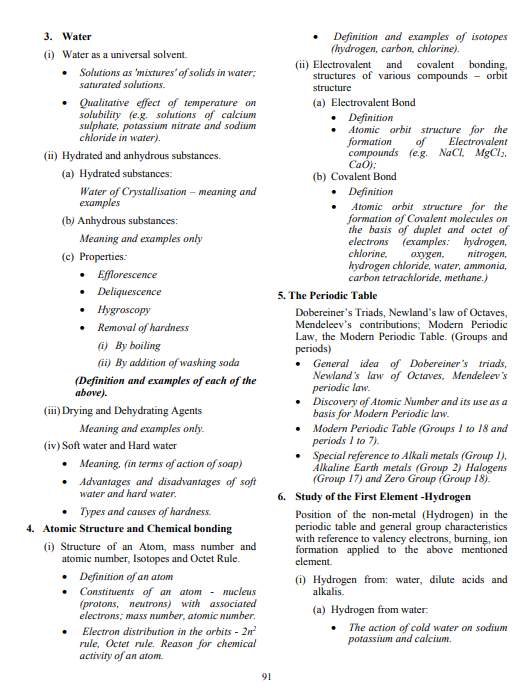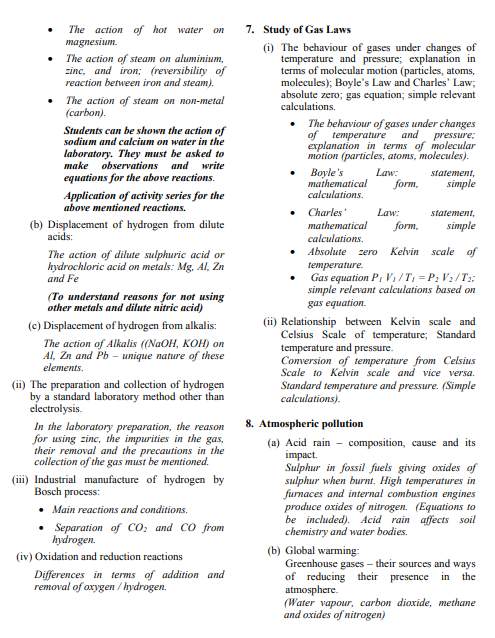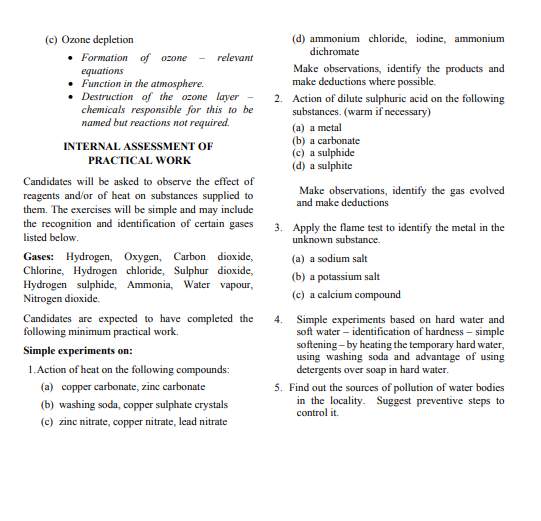|
#4
21st November 2019, 07:58 AM
| |||
| |||
| Re: ICSE Board 10th class Science subject Question Papers
The syllabus of Science Class X of ICSE (Indian School Certificate Examinations) Board on which the question paper is based is as follows: Syllabus for Group –A Physics Unit I : Electricity ( 18 Periods ) (07 Marks )Electric current, potential difference and electric current. Ohm's law; Resistance, Resistivity, Factors on which the resistance of a conductor depends. Series combination of resistors, parallel combination of resistors and its applications in daily life. Heating effect of electric current and its applications in daily life. Electric power, Interrelation between P, V, I and R. Unit II: Magnetic effects of Current( 14 Periods )( 05 Marks )Magnetic field, field lines, field due to a current carrying conductor, field due to current carrying coil or solenoid; Force on current carrying conductor, Fleming’s Left Hand Rule. Electromagnetic induction. Induced potential difference, Induced current. Fleming's Right Hand Rule, Direct current. Alternating current: frequency of AC. Advantage of AC over DC. Domestic electric circuits. Unit III : Light -Reflection and Refraction (14 Periods) (08 Marks)Reflection of light by curved surfaces; Images formed by spherical mirrors, centre of curvature, principal axis, principal focus, focal length, mirror formula (Derivation not required), magnification. Refraction; Laws of refraction, refractive index. Refraction of light by spherical lens; Image formed by spherical lenses; Lens formula (Derivation not required); Magnification. Power of a lens; applications of spherical mirrors and lenses. Unit IV : Human Eye and Colourful World(09 Periods)(04 Marks)Functioning of a lens in human eye, defects of vision and their corrections; Refraction of light through a prism, dispersion of light, scattering of light, applications in daily life. Unit V : Sources of Energy( 08 Periods )( 03 Marks )Different forms of energy, conventional and non-conventional sources of energy: Fossil fuels, solar energy; biogas; wind, water and tidal energy; Nuclear energy. Renewable versus non-renewable sources of Energy Syllabus Science Class X ICSE Board     |